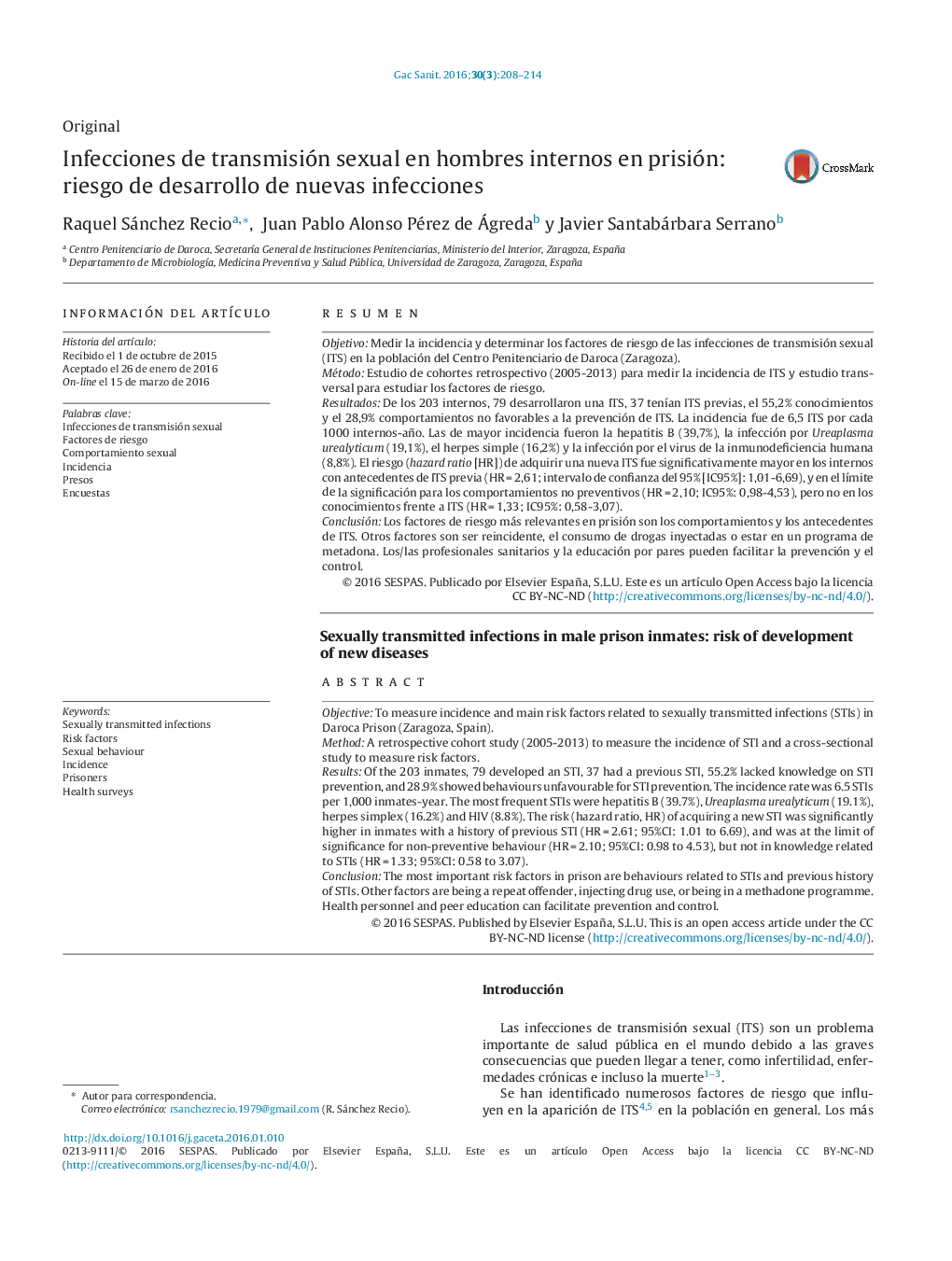| Article ID | Journal | Published Year | Pages | File Type |
|---|---|---|---|---|
| 1073180 | Gaceta Sanitaria | 2016 | 7 Pages |
ResumenObjetivoMedir la incidencia y determinar los factores de riesgo de las infecciones de transmisión sexual (ITS) en la población del Centro Penitenciario de Daroca (Zaragoza).MétodoEstudio de cohortes retrospectivo (2005-2013) para medir la incidencia de ITS y estudio transversal para estudiar los factores de riesgo.ResultadosDe los 203 internos, 79 desarrollaron una ITS, 37 tenían ITS previas, el 55,2% conocimientos y el 28,9% comportamientos no favorables a la prevención de ITS. La incidencia fue de 6,5 ITS por cada 1000 internos-año. Las de mayor incidencia fueron la hepatitis B (39,7%), la infección por Ureaplasma urealyticum (19,1%), el herpes simple (16,2%) y la infección por el virus de la inmunodeficiencia humana (8,8%). El riesgo (hazard ratio [HR]) de adquirir una nueva ITS fue significativamente mayor en los internos con antecedentes de ITS previa (HR = 2,61; intervalo de confianza del 95% [IC95%]: 1,01-6,69), y en el límite de la significación para los comportamientos no preventivos (HR = 2,10; IC95%: 0,98-4,53), pero no en los conocimientos frente a ITS (HR = 1,33; IC95%: 0,58-3,07).ConclusiónLos factores de riesgo más relevantes en prisión son los comportamientos y los antecedentes de ITS. Otros factores son ser reincidente, el consumo de drogas inyectadas o estar en un programa de metadona. Los/las profesionales sanitarios y la educación por pares pueden facilitar la prevención y el control.
ObjectiveTo measure incidence and main risk factors related to sexually transmitted infections (STIs) in Daroca Prison (Zaragoza, Spain).MethodA retrospective cohort study (2005-2013) to measure the incidence of STI and a cross-sectional study to measure risk factors.ResultsOf the 203 inmates, 79 developed an STI, 37 had a previous STI, 55.2% lacked knowledge on STI prevention, and 28.9% showed behaviours unfavourable for STI prevention. The incidence rate was 6.5 STIs per 1,000 inmates-year. The most frequent STIs were hepatitis B (39.7%), Ureaplasma urealyticum (19.1%), herpes simplex (16.2%) and HIV (8.8%). The risk (hazard ratio, HR) of acquiring a new STI was significantly higher in inmates with a history of previous STI (HR = 2.61; 95%CI: 1.01 to 6.69), and was at the limit of significance for non-preventive behaviour (HR = 2.10; 95%CI: 0.98 to 4.53), but not in knowledge related to STIs (HR = 1.33; 95%CI: 0.58 to 3.07).ConclusionThe most important risk factors in prison are behaviours related to STIs and previous history of STIs. Other factors are being a repeat offender, injecting drug use, or being in a methadone programme. Health personnel and peer education can facilitate prevention and control.
